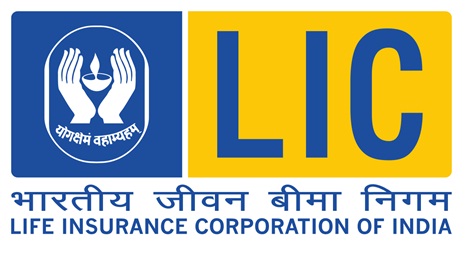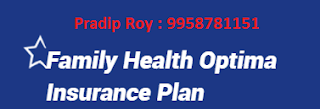It again time to recalculate our Income Tax liability on the basis of our Net Total Taxable Income. Tax is calculated on the basis of Income Tax Rate announce by Government every year in their Annual Union Budget in this month of February.
Government announced Income Tax Rate Slab for Financial Year 2016-2017 ( Assessment Year 2017-2018).
Normal Income Tax Rate applicable to a Resident Individual below the age of 60 years; Non-Resident Individual; Resident/Non-Resident HUF, AOP, BOI, and Artificial Juridical Person.
Normal Tax Rates Applicable to a resident individual of the age of 60 years or above at any time during the year but below the age of 80 years.
Normal Tax Rates applicable to a Resident Individual of the Age of 80 Years or Above at any time during the year.
After taking the Deductions Under Section 80 (C) to 80 (U), and Rebate 87A(Applicable to those whose Total Income is below Rs.5,00,000/-)
the tax is payable after adding the Cess and Surcharges (If applicable)
The Surcharge is levied @ 15% on the Amount of Income Tax where Net Income Exceeds to Rs.1 Crore. In case where Surcharges is levied, the Cess will be levied on the Tax Amount plus Surcharge.
Extract of Section 87A is as follows :-
The following section 87A shall be inserted after section 87 by the Finance Act, 2013, w.e.f. 01-04-2014 :
Rebate of income-tax in case of certain individuals:
Government announced Income Tax Rate Slab for Financial Year 2016-2017 ( Assessment Year 2017-2018).
Normal Income Tax Rate applicable to a Resident Individual below the age of 60 years; Non-Resident Individual; Resident/Non-Resident HUF, AOP, BOI, and Artificial Juridical Person.
| NET INCOME RANGE | INCOME TAX RATE | EDUCATION CESS | HIGHER SECONDARY EDUCATION CESS |
|---|---|---|---|
Upto 2,50,000/- | NIL | NIL | NIL |
Rs.2,50,001 - to- Rs.5,00,000 | 10% of (Total Income - Rs.2,50,000/-) | 2% of Income Tax | 1% of Income Tax |
Rs.5,00,001 - to -Rs.10,00,000/- | Rs.25,000/- + 20% of (Total Income - Rs.5,00,000/-) | 2% of Income Tax | 1% of Income Tax |
Rs.10,00,001 - to -Above | Rs.1,25,000/- + 30% of (Total Income - Rs.10,00,000/-) | 2% of Income Tax | 1% of Income Tax |
Normal Tax Rates Applicable to a resident individual of the age of 60 years or above at any time during the year but below the age of 80 years.
| NET INCOME RANGE | INCOME TAX RATE | EDUCATION CESS | HIGHER SECONDARY EDUCATION CESS |
|---|---|---|---|
Upto 3,00,000/- | NIL | NIL | NIL |
Rs.3,00,001 - to- Rs.5,00,000 | 10% of (Total Income - Rs.3,00,000/-) | 2% of Income Tax | 1% of Income Tax |
Rs.5,00,001 - to -Rs.10,00,000/- | Rs.20,000/- + 20% of (Total Income - Rs.5,00,000/-) | 2% of Income Tax | 1% of Income Tax |
Rs.10,00,001 - to -Above | Rs.1,20,000/- + 30% of (Total Income - Rs.10,00,000/-) | 2% of Income Tax | 1% of Income Tax |
Normal Tax Rates applicable to a Resident Individual of the Age of 80 Years or Above at any time during the year.
| NET INCOME RANGE | INCOME TAX RATE | EDUCATION CESS | HIGHER SECONDARY EDUCATION CESS |
|---|---|---|---|
Upto 5,00,000/- | NIL | NIL | NIL |
Rs.5,00,001 - to -Rs.10,00,000/- | 20% of (Total Income - Rs.5,00,000/-) | 2% of Income Tax | 1% of Income Tax |
Rs.10,00,001 - to -Above | Rs.1,00,000/- + 30% of (Total Income - Rs.10,00,000/-) | 2% of Income Tax | 1% of Income Tax |
After taking the Deductions Under Section 80 (C) to 80 (U), and Rebate 87A(Applicable to those whose Total Income is below Rs.5,00,000/-)
the tax is payable after adding the Cess and Surcharges (If applicable)
The Surcharge is levied @ 15% on the Amount of Income Tax where Net Income Exceeds to Rs.1 Crore. In case where Surcharges is levied, the Cess will be levied on the Tax Amount plus Surcharge.
Extract of Section 87A is as follows :-
The following section 87A shall be inserted after section 87 by the Finance Act, 2013, w.e.f. 01-04-2014 :
Rebate of income-tax in case of certain individuals:
87A. An assessee, being an individual resident in India, whose Total Income does not exceed Five Hundred Thousand Rupees (Rs.5,00,000/-), shall be entitled to a deduction, from the amount of income-tax (as computed before allowing the deductions under this Chapter) on his total income with which he is chargeable for any assessment year, of an amount equal to hundred per cent of such income-tax or an amount of two thousand rupees, whichever is less.















